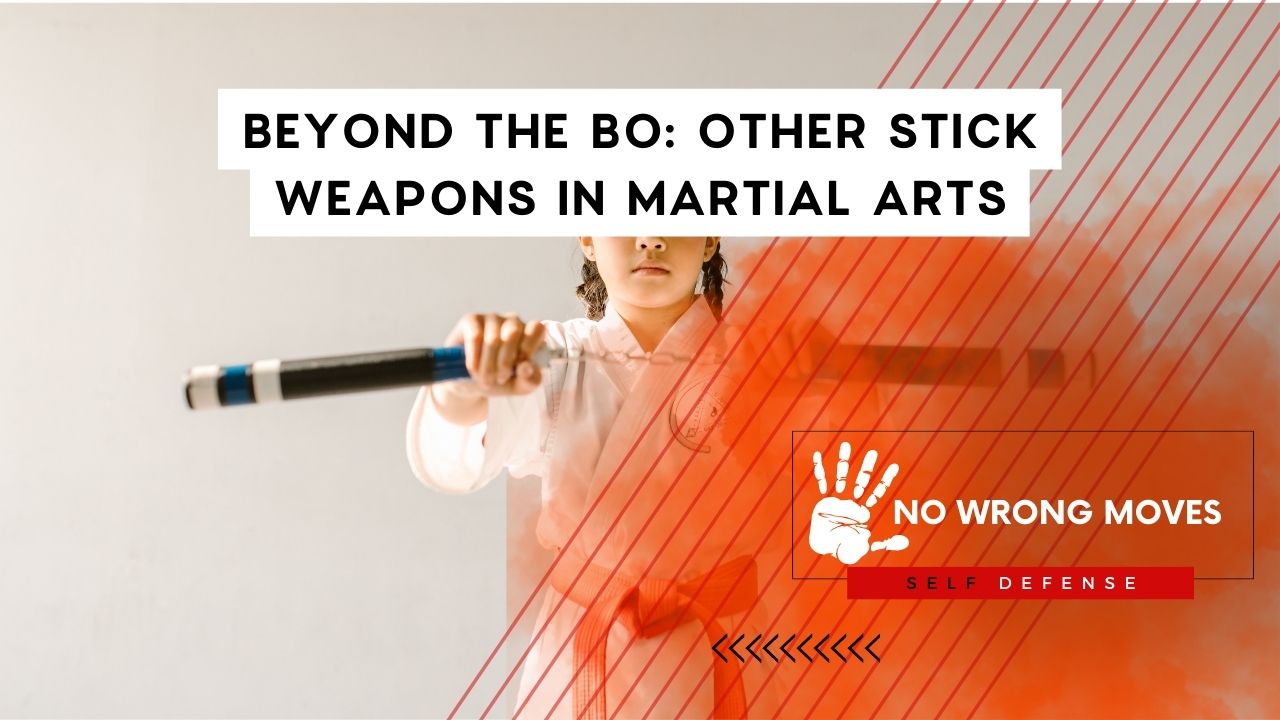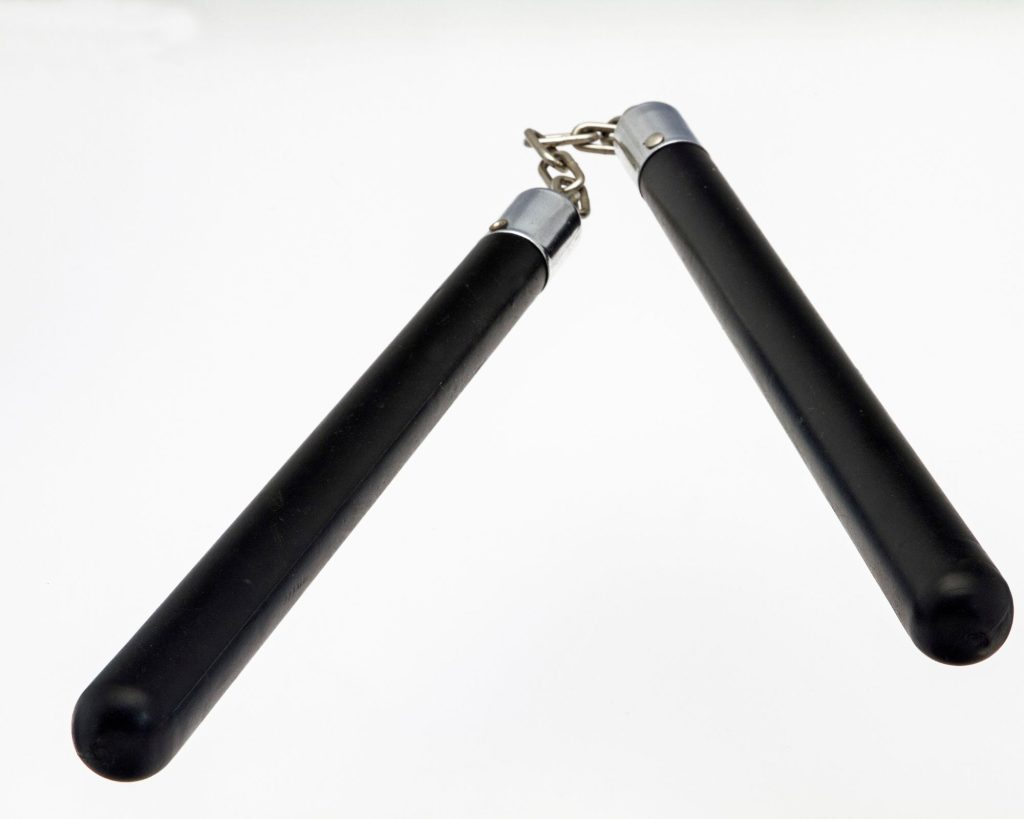
Seeking an alternative method to train with sticks? Eager to learn a technique that's both efficient and enjoyable? I completely understand the desire to look into other stick weapons in martial arts, especially ones beyond the bo, and I'm here to help!
In this article, we'll unveil some exceptional yet potent weapons utilized in martial arts across the globe. We'll delve into their enduring popularity and uncover their origins.
Moreover, we will discuss how each weapon is employed in combat and how mastering one could enhance your practice. So pick up your preferred stick weapon and let's embark on this exciting journey together!
Escrima Sticks
The bo staff is one of the most well-known and widely used weapons in martial arts, but it is not the only stick weapon used for combat and self-defense. In fact, many martial arts styles incorporate a variety of stick weapons that can be just as effective as the bo staff.
Escrima sticks, also known as arnis sticks or kali sticks, are versatile weapons used in the Filipino martial art of Escrima.
Typically made of rattan, a sturdy and flexible material, they can also be crafted from other materials like hardwood or bamboo. These sticks are essential for both training and combat, and are often wielded in pairs.
Escrima sticks have the capacity for a variety of techniques, including striking, blocking, and disarming, making them valuable in both offense and defense. Moreover, Escrima sticks can also be used in conjunction with other weapons such as knives and swords.
Escrima, the martial art from which the Escrima sticks were derived, is renowned for its practical and effective fighting techniques. It emphasizes weapon-based combat and aims to train individuals in practical self-defense.
As a result, Escrima sticks are an integral part of the martial art's curriculum, both in its traditional and modern practices. They are used not only for fighting but also as a tool to develop balance, speed, and coordination.
Rattan, the most common material used in the making of Escrima sticks, is a vine-like species that is native to the rainforests of Southeast Asia.
Its unique properties make it an ideal material for the creation of the sticks, which can withstand impact and stress without breaking or splintering easily. The flexibility of rattan also allows the user to generate speed and power, which is essential in martial arts combat.
While rattan is the material of choice for traditionalists, Escrima sticks can be crafted from a variety of other materials, including hardwood or bamboo. These materials, though heavier, can provide additional heft and power, which some practitioners may prefer.
Nonetheless, the choice of material usually depends on the practitioner's skill level, fighting style, and personal preference.
Nunchaku

The nunchaku, also known as nunchucks, is a traditional weapon in Okinawan martial arts, consisting of two sticks connected to each other by a short metal chain or rope.
With a length of approximately 30cm (12") and a thickness of about an inch, the weapon is widely used in martial arts such as Okinawan kobudō and karate. It is an excellent training weapon, enabling the development of quick hand movements and improving posture.
Nunchaku can be made of different materials, including wood, metal, plastic, or fiberglass. While modern materials such as plastic and fiberglass are often used, traditional nunchaku are made from strong and flexible hardwood, such as oak, loquat, or pasania.
The weapon is considered a striking weapon, and martial artists can use it to block other weapon strikes without actually hitting their opponents. When learning to use nunchaku, safety and proper technique should be the top priority.
Beginners can start by using foam nunchaku to avoid the risk of accidentally hitting themselves with wood or metal. It is also crucial to ensure that the weapon is carried only in permitted areas and to practice in a safe spot.
When selecting nunchaku, it is important to consider your personal physical build and experience in using the weapon. Different types of nunchaku exist for different martial arts styles, and they can be made of various materials, including wood, metal, or plastic.
Light woods are ideal for most training, as they provide the speed and impact of heavier woods with less risk of damage to the martial artist, the target, and the weapon itself.
As you progress in your training, you can choose a heavier wood or metal to increase the resistance and difficulty level.
Hanbo

The hanbo, or half-staff, is a versatile Japanese weapon that has been used in martial arts for centuries. With a length of approximately three feet, it is an ideal weapon for striking, blocking, restraining, and throwing techniques.
The hanbo is part of a family of wooden weapons that includes the jo and the tanbo, but its shorter length makes it unique among them.
The hanbo is widely practiced in several martial arts styles, including Ninjutsu and Hanbojutsu, where it is a fundamental weapon.
It was originally developed as a weapon for samurai to use against armored opponents, and its simplicity and versatility have made it a popular weapon for modern martial artists.
Not only is the hanbo a weapon, but it can also be used for self-defense purposes. Its length and diameter can vary depending on the user's build and the specific school of martial arts being practiced. However, it typically measures around 90 cm long and 2.4 to 3 cm in diameter.
When learning how to use the hanbo, it is important to focus on safety and proper technique. Beginners can start by practicing with a lighter and softer material, such as foam, to avoid any accidental injuries.
It is also important to practice in a safe environment and under the supervision of an experienced instructor.
The Wrap-Up: Other Stick Weapons In Martial Arts

In conclusion, while the bo staff is a popular and effective weapon used in martial arts, it is not the only stick weapon available. Escrima sticks, nunchaku, hanbos, are just a few examples of the many stick weapons used in martial arts.
Each weapon has its own unique characteristics and requires a different set of skills to use effectively. By exploring these other stick weapons, martial artists can expand their knowledge and skills in the realm of stick fighting.
Wondering how to best store your sticks? I don't blame you--it can be a bit of a hassle at first. But don't worry, I've got you covered here!
[author-box-jpx-fitness]

